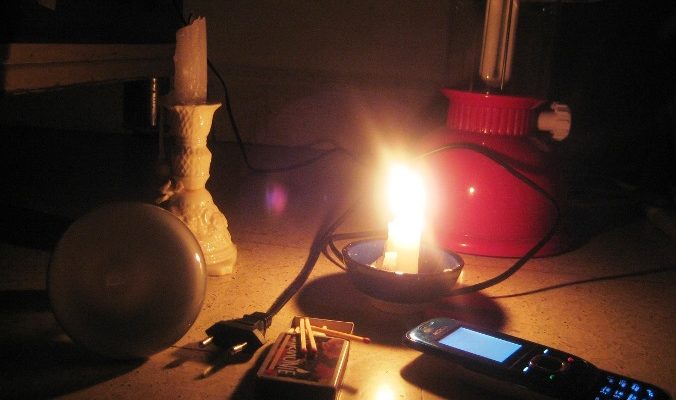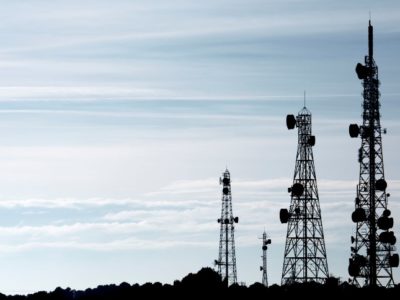Matters eRising with Olusegun Oruame
Seventeen of Nigeria’s nineteen northern states are grappling with a severe power outage, plunging the region into darkness for eight consecutive days. The blackout has disrupted essential services, paralyzed economic activities, and left over 100,000 small businesses struggling to stay afloat. As the cost of running petrol-powered generators soars, many business owners, particularly in sectors reliant on refrigeration like frozen food vendors, have been forced to suspend operations or face significant losses due to spoiled inventory.
RELATED: Big Tech’s power usage: Apple can foot their $457m electricity bill with just 10 hours of revenue
Water vendors are also feeling the impact, doubling their prices as they incur higher costs to power boreholes with generators. The lack of electricity has affected nearly every aspect of daily life in the region, creating widespread economic distress.
The Cause of the Outage: Faults and Infrastructure Issues
The crisis began last Monday with the tripping of the 330kV circuit transmission lines between Benue and Enugu, and between Shiroro and Kaduna, causing a complete power blackout across northern Nigeria. According to the Transmission Company of Nigeria (TCN), the 330kV DC Ugwaji-Apir double circuit tripped due to a fault, cutting off power to the Northeast, Northwest, and parts of Northcentral regions.
The power outage has dealt a heavy blow to hospitals and laboratories, which rely on stable electricity to power medical equipment and provide diagnostic services. The healthcare sector is now in jeopardy, putting thousands of lives at risk.
Vandalism Worsens Restoration Efforts
Adding to the chaos, vandals have taken advantage of the situation by targeting transformers and other power infrastructure, further complicating efforts to restore electricity. The TCN has acknowledged the outage, attributing delays in restoration to infrastructural challenges, vandalism, and insecurity.
Despite assurances that “every possible measure” is being taken to resolve the issue, power has yet to be restored, and millions of people continue to endure extreme hardship. The recent blackout occurred shortly after Nigeria experienced three national grid collapses in one week, underscoring the country’s ongoing struggle with power stability.
Challenge of Old, Centralised Grid
Additionally, the government intends to introduce regional grids to decentralize power distribution. “The world has moved beyond a centralized grid,” Adelabu stated, emphasising the need for state and regional grids. “Each regionalized grid should operate independently so that issues in one area won’t disrupt the entire network.”
Nigeria’s national grid infrastructure is severely outdated, with many components exceeding 50 years in age. The transmission lines are fragile, towers are deteriorating, and substations and transformers are overdue for replacement. For instance, a transformer that recently failed in Jebba was nearly 50 years old.
The Need for Smart Grid Technologies
The persistent faults on power transmission lines illustrate a significant gap in Nigeria’s electricity management—the lack of digital tools for monitoring and diagnosing issues across the power grid. While faults are inevitable, smart technologies could have minimized the outage’s impact. It took the TCN over three days to detect and locate the fault. With modern fault detection systems, such as intelligent distance relays, long-range wireless sensor networks, or IoT-based smart monitoring systems, the issue could have been identified within minutes.
A recent study by researchers from Chukwuemeka Odumegwu Ojukwu University showed that using Artificial Intelligence (AI) for fault detection on Nigeria’s 330kV power transmission lines could improve efficiency by over 900%. Yet, over 70% of the power sector’s management and operations remain manual, contributing to frequent outages and delays in restoration.
Learning from Other Economies: The Case for Digital Transformation
Countries like India and Brazil, with similarly challenging terrains, have integrated AI and smart technologies into their power management systems to predict and address faults before they cause major disruptions. Smart grids—electricity networks that use digital technologies, sensors, and software to balance supply and demand in real time—are now commonplace in more advanced economies. These systems enable two-way communication between the grid and end-users, enhancing reliability and reducing costs.
For Nigeria to improve its power stability, it must modernize its grid. The recent outage serves as a wake-up call to fast-track the adoption of smart technologies for fault detection, outage management, and predictive maintenance.
Time for Urgent Action: Modernizing Nigeria’s Power Grid
The ongoing power crisis has demonstrated the urgent need to rethink Nigeria’s electricity management strategy. Grid modernization initiatives should focus on implementing advanced fault detection systems, planning for power transmission and distribution, and integrating renewable energy sources. With the right approach, the country can transition to a smarter, more resilient power grid capable of sustaining economic growth and improving the quality of life for millions.
The darkness in Northern Nigeria is a stark reminder of the power sector’s challenges and an opportunity to embrace innovative solutions. The time to act is now, before the next crisis strikes. The darkness is so depressing!
COVER IMAGE: SolaceBase





























